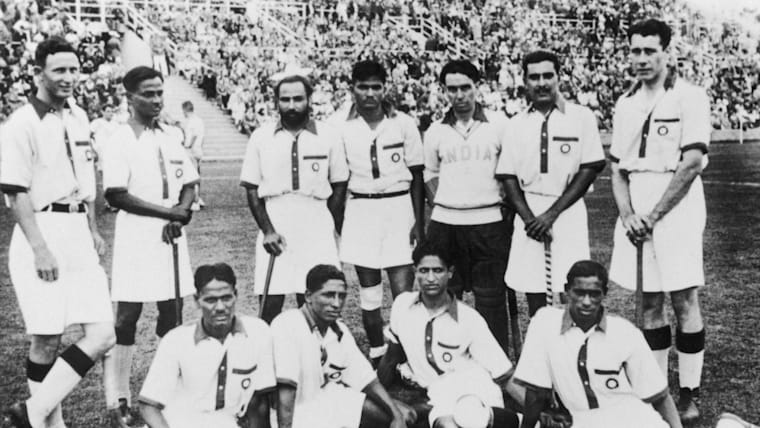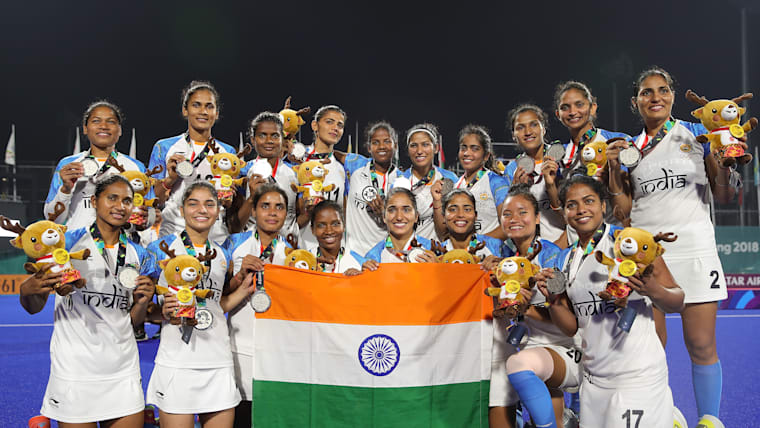News for 25 December 2020
All the news for Friday 25 December 2020
Wins for Dar & Tahir Zaman Academies in Hi-Tech Under 17 Hockey
By Ijaz Chaudhry
Lahore: Dar Hockey Academy, Lahore and Tahir Zaman Academy, Gojra won their matches in contrasting styles on the second day day of the Hi-Tech Under 17 Hockey Tournament at the National Hockey Stadium Lahore.
Though Dar HA downed Aslam Roda HA, Gojra 4-0 for their second successive victory, it wasn't an easy win.
The first half was quite evenly fought and it remained goal less.
In the second half,Dar academy repeatedly penetrated the opponents' defence and scored four goals, two apiece via open play and penalty corners. Field goals were shared by Abdul Rahman and Salman Ashiq while Waseem and Safyan Khan converted penalty corners.
Man of Match: Hamza (Dar Academy, Lahore)
Second match was full of excitement. Tahir Zaman Academy defeated Fiaz Hockey Academy,
Sargodha 3-2. The Sargodha lads twice came from behind to level the score. However, they failed to equalise the third time.
For TZA, Nokhaiz (Penalty corner), Azan Abbas and Yasir Nawaz were the goal getters.
Fiaz Academy`s goals were scored by Basharat Ali (penalty stroke) and Ammad.
Man of Match: Azan Abbas (Tahir Zaman Academy, Gojra)
After two matches, Dar HA leads the table with six points, having won both their ties.
With one win and one defeat, Fiaz Academy and Tahir Zaman Academy have four points each though Fiaz Academy lies second in the table with a better goal difference of just one.
The fourth side, Aslam Roda Academy has lost both its matches.
Ijaz Chaudhry writes on hockey & other sports. For more about him and his work, visit: www.sportscorrespondent.info
Fieldhockey.com
World Cup Co-Host Rourkela City To Get Largest Hockey Stadium in India
By TAZEEN QURESHY
In the run up to the Men’s Hockey World Cup 2023, Odisha Chief Minister Naveen Patnaik has announced a new stadium in Rourkela. The stadium will be the largest hockey facility in the country, he has said.
Releasing a video message for the public, the Chief Minister said the stadium will have a seating capacity of 20,000 and all the state-of-art facilities.
Rourkela town in in Sundargarh district of Odisha, which is home of several international hockey talents such as Dilip Tirkey and Sunita Lakra.
The stadium will be a tribute to the nursery of hockey, Patnaik added.
“As a tribute to the contribution of Sundargarh to Indian Hockey, I would like to announce that we will build a new International level Hockey Stadium in Rourkela with a seating capacity of 20,000,” Chief Minister said.
The stadium along with the allied facilities will be developed as a benchmark for other Hockey stadiums around the world. Spread over 15 acres of land, the stadium will be constructed in the Biju Patnaik University of Technology campus, Rourkela.
“The stadium will have all the modern amenities and will offer a unique experience to the public. I hope it will emerge as the best venue for Field Hockey in the World,” he said.
Earlier, a team of FIH officials including its President Narinder Dhruv Batra had visited the city for reviewing the progress of the projects. The team had expressed its satisfaction over the work done so far.
Besides Rourkela, Kalinga Stadium in Bhubaneswar will also be hosting the prestigious tournament. Kalinga Stadium had also hosted the 2018 edition of the Hockey World Cup.
HOCKEY INDIA ADDS
Chief Minister Shri Naveen Patnaik, today, announced a new world class Hockey stadium in Rourkela city which would be the biggest stadium for Hockey in India with a sitting capacity of 20 thousand.
This is going to redefine the sports landscape in the region.
The stadium along with the allied facilities will be developed as a benchmark for other Hockey stadiums around the world. Spread over 15 acres of land, the stadium will be constructed in the Biju Patnaik University of Technology campus, Rourkela.
Announcing this in a video message, Chief Minister Sri Patnaik said, “As we have announced earlier, Odisha will once again be the proud host of the prestigious Men’s Hockey World Cup in 2023.
“As a tribute to the contribution of Sundargarh to Indian Hockey, I would like to announce that we will built a new International level Hockey Stadium in Rourkela with a seating capacity of 20,000.”
“The stadium will have all the modern amenities and will offer a unique experience. I hope it will emerge as the best venue for Field Hockey in the World, he concluded.
Recently, a high level team including senior officials from the State Government, International Federation of Hockey (FIH), Department of Sports and Youth Services and Hockey India had visited Rourkela.
And reviewed the infrastructure and allied facilities in the city to host the prestigious and much awaited Hockey event. The work to develop synthetic hockey turf in each of the 17 blocks of Sundargarh district has already commenced.
Stick2Hockey.com
Odisha announces plans for India's largest hockey stadium
Odisha Chief Minister Naveen Patnaik, on Thursday, announced plans for India's largest hockey stadium in Rourkela with a seating capacity of 20,000.
Odisha Chief Minister Naveen Patnaik has announced plans for India's largest hockey stadium in Rourkela ahead of the men's World Cup in 2023. - BISWARANJAN ROUT
Odisha Chief Minister Naveen Patnaik on Thursday announced that the state would build a world class hockey stadium in Rourkela, the city which would co-host the 2023 World Cup with Bhubaneswar.
The new infrastructure will be the biggest hockey stadium in the country, said a statement from the Odisha Government.
Spread over 15 acres of land, the stadium will be constructed on the Biju Patnaik University of Technology campus.
“Sundargarh district is our powerhouse of hockey talent. Many great hockey players from the district have represented the country at the international level. The support of people of the district to hockey players is unparalleled.
“As a tribute to the contribution of Sundargarh to Indian hockey, I would like to announce that we will build a new international level hockey stadium in Rourkela with a seating capacity of 20000,” said Patnaik in a video message.
The stadium, featuring all modern amenities, is expected to offer a unique experience to the spectators.
Recently, a high-level team, including senior Government officials, International Federation of Hockey (FIH) and Hockey India, visited Rourkela and reviewed the infrastructure and allied facilities in the city for the prestigious event.
Sportstar
Ace centre half has better half to thank!
By ERROL D’CRUZ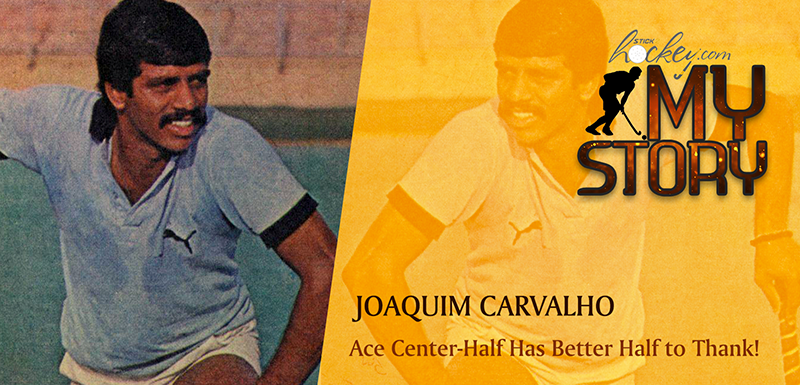
They were bright stars that lit up the hockey firmament but now lead quiet lives. Their exploits and feats still draw the adulation of two generations of fans. Their path to success and recognition, however, was fraught with challenge, hardship and sacrifice calling for hard work, determination and resilience but it also presents many a heart-warming tale. This is second in the MY STORY Series, which is an effort to capture nuggets in the illustrious careers of these stars of yesteryear as they recollect their past, something that could well inspire GenNext bracing for challenges of their own – EDITOR
Joaquim Carvalho, India star of the mid-1980s, needed to find reason and motivation for the demanding task of staying in contention for selection to the India team. Sure, pride and honour in wearing the India shirt and pleasure and fulfillment in playing the game he loves at the highest level provided the impetus. But it was still a challenge to retain one’s place in the squad. What finally ensured Carvalho kept at it through thick and thin was the effect of Cupid’s golden arrow. Let’s hear it from the 61-year-old himself.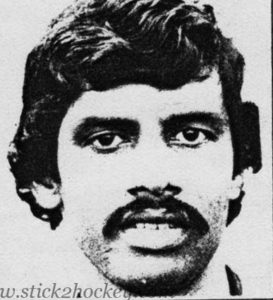
Joaquim Carvalho
“You see, I was wooing the lady in my life who was also training at the NIS, Patiala, at the time. “I had set my eyes on Vandana (Rao), who was a leading athlete at the time,” Carvalho, a robust centre-half in his hey day, says. “If I were to keep meeting her, I needed to remain part of the hockey core group for national selection so that I could stay and train at NIS, Patiala!”
Happily for Carvalho, he had more than proved his worth – both, as an India player as well as the successful suitor of the woman he married in 1991 after a decade of courtship. Reflecting on the challenge facing an India hopeful, Carvalho, who played more than 100 internationals, says, “Earning an India cap was tough. Very few make it and when one does, joy knows no bounds.”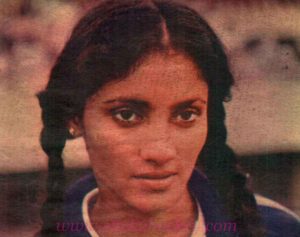
Indian Olympic athlete Vandana Rao, fiance of Joaquim. 1984
The Mumbai-raised World Cupper and Olympian reflects on his resilience when he aspired to don the coveted sky blue shirt: “I had attended so many camps. Often, it was the case of so close yet so far. For two years, I was among the stand-bys but failed to break into the team after the grind and toil in the summer heat of Patiala. Then, in 1981 I was selected for the European tour after proving my versatility at both the centre-half and left-half positions. But at the last moment I was sidelined and in came Sujit Kumar, a left-half, which took the total number of halves in the squad to five”.
“I found that unbearable and I took refuge in the shower where I daresay I shed a tear or two. And it wasn’t just me. My friend and future India teammate Somaya (also Mumbai-based) played well at camps and was surprisingly ignored for the Quadrangular in Kuala Lumpur, Malaysia, a few months before the 1980 Moscow Olympics. Returning home dejected was hard especially while travelling five hours by road from Patiala to Delhi before catching a train to Mumbai,” Carvalho recollects.
Carvalho made a pragmatic decision to skip the camp for selection to the Moscow Olympics in order to pass examinations and acquire a B.A. degree. “I believed that education should be a priority. There was always a chance to win an India cap later,” he says. Pulling out of the Moscow camp may have pegged back Carvalho’s prospects of being selected but he kept knocking on the door.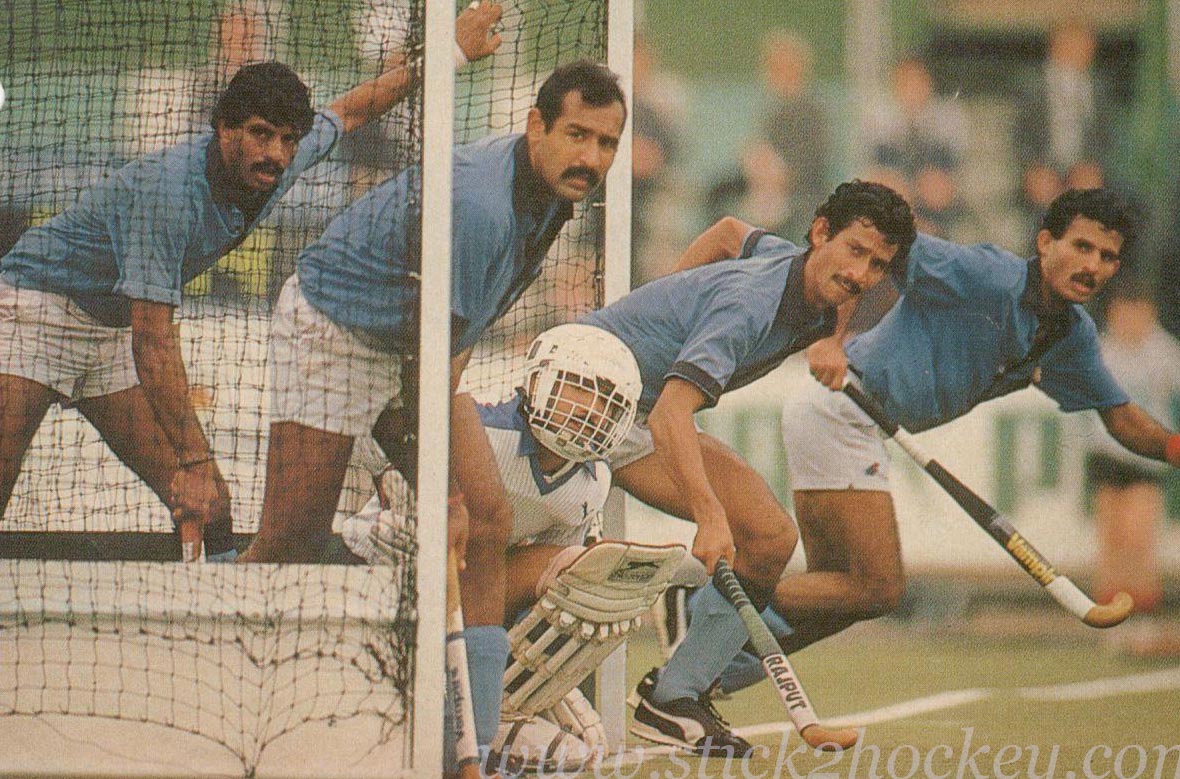
Indian defend a penalty: (l-r) Joaquim, MMSomaya, Vineet Kumar & BK Subramani
He made a huge statement at the Kolkata National championships in 1982 by scoring 11 goals that sat on a solid performance as pivot in the Mumbai team but failed to make the grade yet again. He did not lose heart. Instead swore to work harder. And he remembers encouragement from Somaya, his great rival in Mumbai school’s hockey.
“Playing an under-13 match, my strong tackle on Somaya drew a yellow card that found me spending time behind my team’s goal (as was the rule in those days). My coach who turned up late for the match strained his eyes to locate me on the pitch only to find me cooling my heels behind our goal!”
A decade later, it was Somaya providing Carvalho much needed assurance. “He told me I would get selected one day and his words helped.” The big day finally arrived when Carvalho featured in the team for the 1982 Indo-Pak series in Dubai. He shone in the series and became a regular for nearly five years in campaigns that included the Olympics, Champions Trophy, the Asian Games, the Esanda Invitational tournament and bi-lateral test series.
Carvalho experienced joy – which included a sensational 5-4 win over Pakistan from 0-3 down in the 1982 Amstelveen Champions Trophy where India picked up the bronze medal – and despair following an infamous 1-7 defeat to Pakistan in the Asian Games final the same year. “Within a fortnight we avenged that defeat at the Esanda tournament in Melbourne. That period reminds me that I was lucky to have wonderful coaches. It was Balbir Singh Senior first and then Balkishen Singh, legends both.”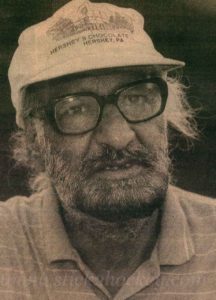
Coach Balkishen Singh
In fact, Carvalho spells out how and why he turned specialist penalty stroke taker. “A teammate missed a penalty stroke in the 1983 Azlan Shah Cup and I was the one to bear the brunt of a tongue lashing by coach Balkishen after the match. He would have wanted me to take the stroke and made it a must that I do so in future games,” Carvalho reveals.
It proved crucial, none more so than in the epic against (West) Germany in the 1985 Perth Champions Trophy where India fought back from 1-5 down to 4-5 in the last eight minutes and forced a penalty stroke with 20 seconds left. The pressure would have been unbearable for any penalty stroke taker as the German goalkeeper filibustered before taking his position under the bar. Carvalho’s cool demeanour, though, was striking. As was his execution of the stroke which drew the match 5-5.
“I was absolutely confident while taking the stroke. I was made to take some 100 penalty strokes at each practice session. Sometimes dozens of them after a match, long after the team coach left the venue for the hotel!”
There were several joyous moments in Carvalho’s diary. But there were those of despair. Against Germany, a year prior. “We did well in the build up to the Los Angeles Olympics and were going fairly well in the tournament itself. We won three matches before losing to Australia 2-4 and were up against Germany needing to win to qualify for the semifinals. It ended goalless with Zafar Iqbal, our left-winger, missing a great opportunity at the fag end. The team was shattered. We had no appetite to eat, skipped dinner and remained in our rooms,” Carvalho recalls.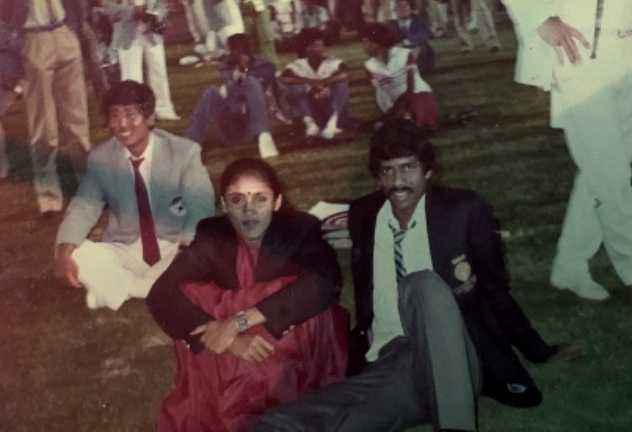
“My fiancé Vandana and her India 4×400 relay team, however, reached the final for the first time ever!
“But here I was, spending the worst day in my life.” There were other lows too. The last-place finish at the 1986 World Cup still rankles. But Carvalho reflects on the more endearing memories. Some of them amusing. Like the instance when he discussed umpiring bias with an Australian umpire. He quoted an incident in the 1983 series against Australia in Australia when India were denied a goal when right-winger Jallaludin’s attempt went in after hitting the crosspiece.
“We converged around the umpire to persuade him to change his decision. But it was only after Ric Charlesworth, the legendary Australian, stepped up to convince him that the ball did go into goal was the decision reversed. “The umpire I was conversing with was Dennis Meridith — the very official who disallowed the goal years earlier!,” Carvalho says with a chuckle.
After being ignored for the 1986 Seoul Asian Games, Carvalho was hurriedly recalled for the World Cup that followed a few days later. “The establishment realised that experienced hands were necessary for a major campaign after the disaster of the Asian Games where for the first time in history, India failed to reach the final.
“I got the news from Vandana from Seoul where she was participating. “At first I was reluctant to go but was persuaded to by Baptist D’Souza, then Bombay Hockey Association president.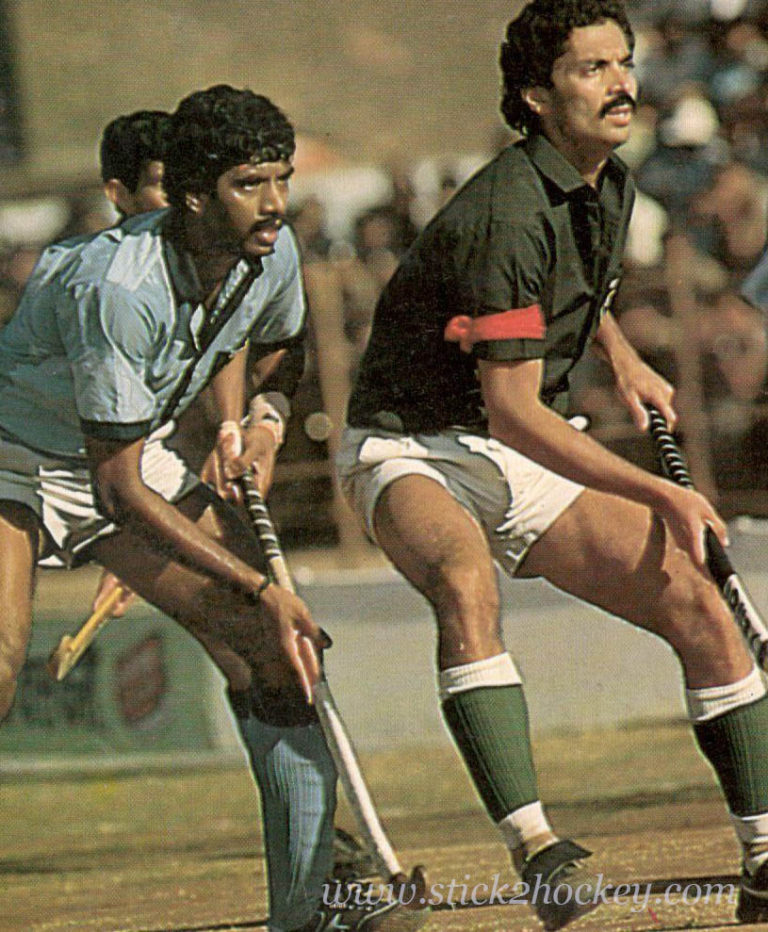
Joaquim marking Hasan Sardar in the Test Series
Pakistan ace centre-forward Hassan Sardar was also snubbed for the Asian Games but, like Carvalho, was recalled for the World Cup. “We met in London and Sardar expressed surprise to see me there,” Carvalho recounts. “I replied, saying that after marking you closely in a test series a few months ago, they recalled me after learning you were going to the World Cup!”
The team, though, was ill prepared and crashed to 12th and last position in the World Cup after which Carvalho decided enough’s enough. He quit international hockey and concentrated on his job in Mahindras whom he represented in Mumbai’s Super Division league.
“Coaching was my next phase of involvement in the game and I went abroad to Oman where I coached its national team,” Carvalho, who, like Vandana, is an Arjuna awardee, recounts.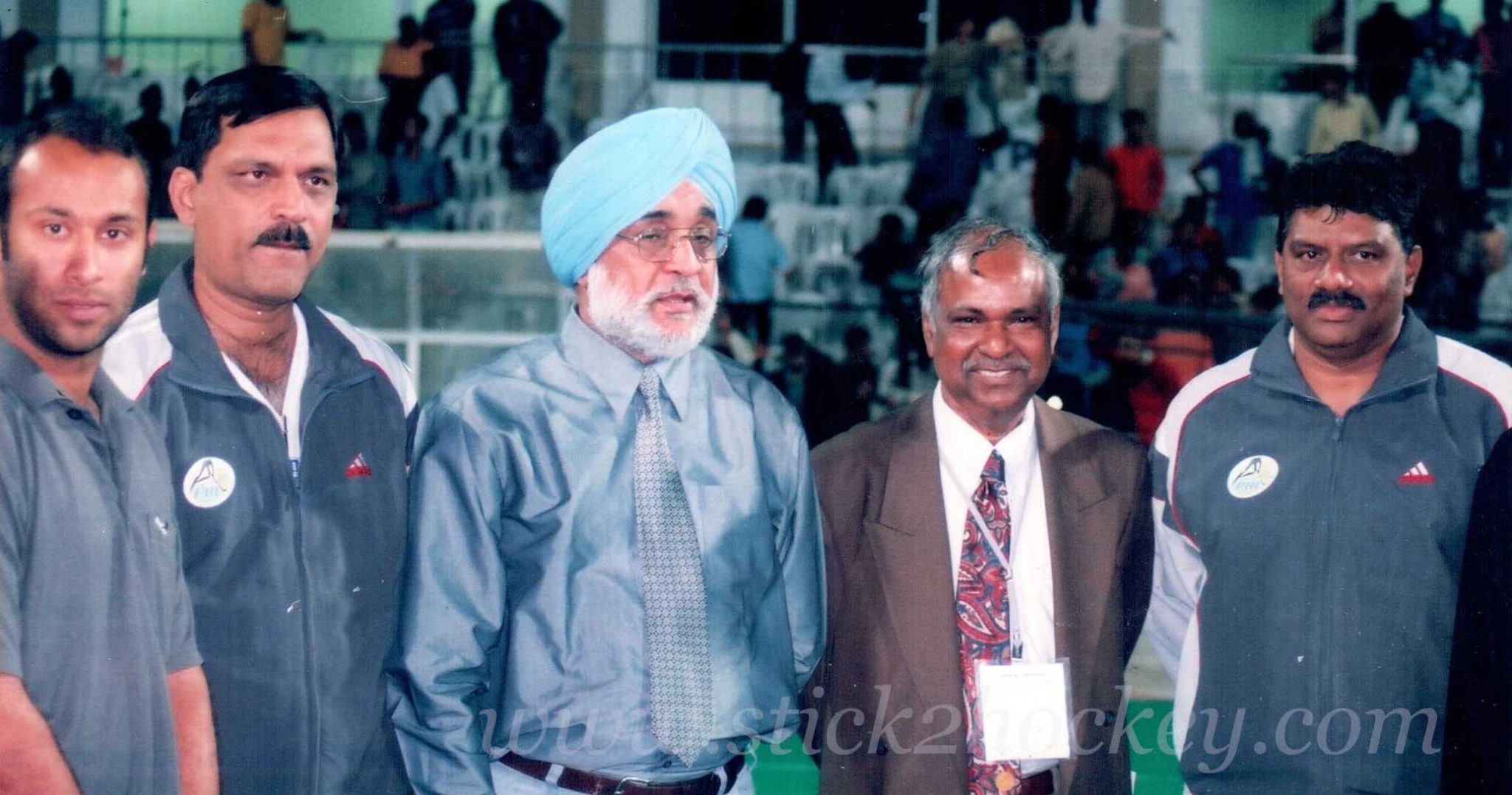
In PHL as coach: Pakistan star Mudasar Nasar, Coach Lobo, Ajitpal Singh, Admino Jesudanam and Joaquim
“Years later, I endeavoured to make a difference as committee member of the Bombay Hockey Association. Along with a group of prominent players and officials including Mark Patterson, Peter Menezes, Ranjit Dalvi, Gurbux Singh and Nanjappa, I helped bring a new floodlights facility in the place of the obsolete one at the Mahindra Stadium. “We also pressed for the replacement of the artificial surface at the venue and the upgrading of the dressing rooms,” Carvalho reveals.
As a coach, Carvalho made steady progress with the Mumbai team which he guided to the 1994 National Championship final at home. Carvalho, who opened a sports goods retail outlet in Mumbai and later in Goa, the land of his ancestors, waited patiently to fulfill aspirations of coaching the national team.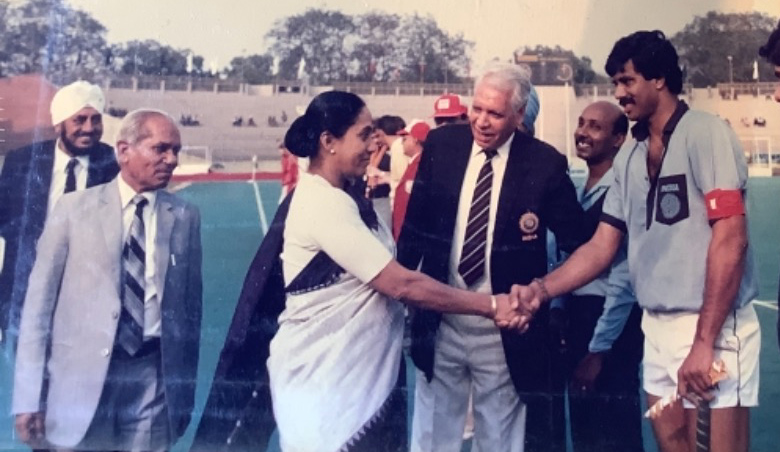
Captain Joaquim shaking hands with Sports Minister Margaret Alva, Indira Cup
“Mine was a short stint but a satisfying one. I started with the Azlan Shah in 2007 and took the team to third spot. It was a bronze also at the Champions Challenge and towards the end of the same year guided India to the winners podium in the Asia Cup. We had a good run in the year leading to the Olympic qualifiers but we lost to Great Britain in the final in Santiago, Chile, and failed to qualify for the Olympics for the first time ever. It was deeply disappointing,” Carvalho says. “But I had not flinched from accepting the post of head coach with a view to seal a spot at the 2008 Beijing Olympics.”
Carvalho remains loyal to hockey even though, as a Goan, football runs in his blood.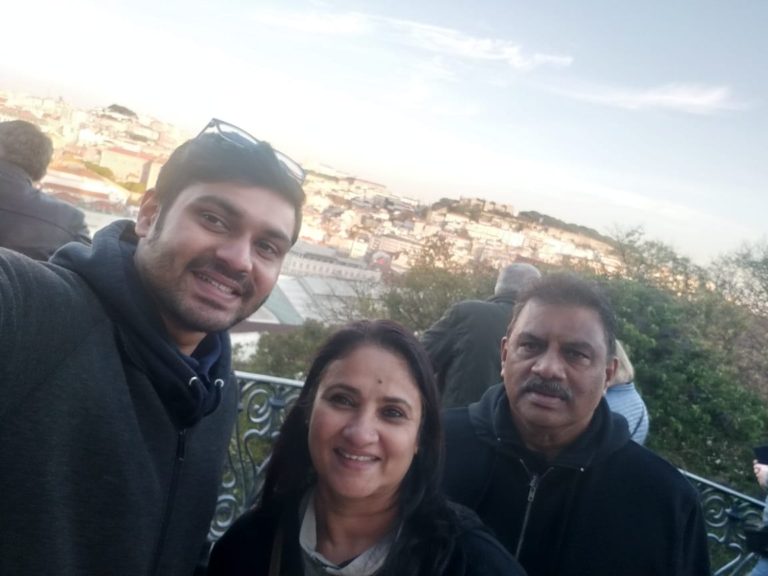
Joaquim with wife Vandana and son Akshay
“I considered myself a better footballer than a hockey player,” Carvalho reckons. “I also did pretty well in the sprints and 800m.” “But I honed my hockey skills at Ranwar Square in Bandra (a suburb in Mumbai) where five-a-side games were popular. I grew up being influenced by skilful players like Bruno Fonseca, Roque Fonseca, Desmond Fonseca, Agnelo Vaz, Wilbur Rodrigues, Freddy D’Sa and many more…”, says Carvalho, whose parents moved from Goa to Dhobi Talaob, Mumbai.
When his family moved to Bandra, he attended St Andrew’s High School before joining St Stanislaus’ – both noted hockey nurseries. Carvalho now leads a quiet life in Bandra, Mumbai, with Vandana and 26-year-old son Akshay who played hockey and football in school before concentrating on a career in management.
“I have no regrets. I have thoroughly enjoyed my hockey career. The game has given me a lot – the honour of representing my country and a good life.”
“And, oh yes… hockey also helped bring me a lovely wife.”
Photos: Carvalho Album & K. Arumugam Collection
Stick2Hockey.com
History of hockey in India: Taught by the British, India conquered the world
Introduced in the Indian army during British rule, hockey attracted the masses so much so that India won a hattrick of gold medals not once but twice.
By Rahul Venkat
Among the world’s premier sports with an Olympic legacy and featuring blue riband events like the World Cup, Champions Trophy and FIH Pro League, field hockey traces its roots back to the 16th century.
One of the most ancient games in the world -- a crude form of the sport was played in Egypt some 4,000 years ago -- the history of hockey can be traced back to 1527 in Scotland. Back then, it was called ‘hokie’ – where players hit around a small ball with sticks.
However, the first version of modern-day field hockey was developed by the British sometime between the late 18th and early 19th century. It was introduced as a popular school game then and made its way to the Indian army during British rule in the 1850s.
The availability of large plots of land as playing fields and the uncomplicated nature of equipment meant that hockey gradually became the popular sport of choice among children and young adults in India, with the country’s first hockey club being formed in then Calcutta (now Kolkata) in 1855.
In the next few decades, national competitions like the Beighton Cup in Calcutta and Aga Khan tournament in Bombay (now Mumbai) popularised the sport further, especially in erstwhile provinces of Bombay and Punjab.
There were talks of forming a hockey association in India in 1907 and 1908, but it didn’t materialise. The Indian Hockey Federation (IHF) was only formed in 1925, one year after the formation of the International Hockey Federation (FIH).
The IHF organised its first international tour in 1926 to New Zealand, where the Indian hockey men’s team played 21 matches and won 18. The tournament saw the emergence of a young Dhyan Chand, who would go on to become arguably the best player the world has ever seen.
After a rocky relationship with the Olympic Games until 1924 -- hockey was only played in 1908 and 1920 and dropped for the other editions -- the presence of a global sports body (FIH) ensured that hockey gained permanent Olympic status starting Amsterdam 1928.
The Indian Hockey Federation applied and earned an FIH membership in 1927, thus ensuring that the Indian hockey team would play its first Olympics in 1928.
It was the beginning of a legacy - decorated with eight gold medals - a record till today.
Dominating the Olympics
The Indian hockey team clinched the Olympic gold medal in its first attempt in 1928. India played five matches, scoring 29 goals and conceding none, with Dhyan Chand scoring 14 of them.
The hockey wizard became the cornerstone of the Indian hockey team as it won two more gold medals in 1932 and 1936, completing a hat-trick of Olympic hockey golds. Dhyan Chand was made captain in 1936 in what would prove to be his final Olympic Games.
Dhyan Chand (standing second from left) with the Indian hockey team at the 1936 Berlin Olympics. Photo: Olympic Archives.
When the Olympics returned after World War II in 1948, India found a new genius in the legendary Balbir Singh Sr. as he steered them to a second hat-trick of Olympic gold medals in 1948, 1952, and 1956, this time as an independent nation. The period was one of the most significant in the history of hockey in India.
While Pakistan halted the gold run in the final at the 1960 Rome Olympics, India would ascend to the top step at Tokyo 1964. However, it was apparent that India’s domination of the sport was weakening.
The Indian hockey team had won silver at the 1958 and 1962 Asian Games, before finally winning gold in the 1966 edition. However, India only managed a bronze at Mexico 1968, in what was then their lowest finish in the Olympics.
The 1970s: Women’s team goes international
Hockey expanded its reach beyond the Olympics with the first Hockey World Cup held in 1971 in Spain. Though Pakistan beat Spain to win the title and India finished third, the sport was steadily gaining popularity in Europe, and innovations were underway.
India did manage another bronze at the 1972 Olympics in Munich, before making the World Cup final in 1973, where they lost to the Netherlands.
While India’s representation in global hockey was largely restricted to the men, the women’s team made its first appearance in international competition at the inaugural women’s Hockey World Cup in 1974, finishing a creditable fourth.
There seemed to be an upturn when the men’s team won its only World Cup title in 1975.
But the 1976 Montreal Olympics was the first to be played on astroturf – artificial grass fields specially curated for the sport - and the men’s Indian hockey team finished seventh.
It ended India’s Olympic podium run for the first time while the women’s team mustered a similar finish at the 1978 World Cup.
In this decade, the men’s team also ended up with three consecutive Asian Games silver medals in 1970, 1974, and 1978.
1980s-2008: A period of stagnation
The 1980s actually began well for the Indian hockey teams.
The men’s team took advantage of a depleted field to win their eighth Olympic gold at Moscow 1980 while the women’s team finished fourth in what was the first edition of women’s hockey at the Olympics.
At the 1982 Asian Games in New Delhi, where women’s hockey was played for the first time, the women’s Indian hockey team clinched a historic gold at home while the men’s team won silver.
However, there were no more accolades forthcoming after this period.
India were slow to take to the astroturfs, with local players still mostly playing on natural grass fields, which meant that the Indian hockey teams fell short at global events.
Neither the men nor the women were able to make the semi-finals at the World Cups or the (only men’s) Champions Trophy, with their medals restricted to a bronze each at the 1986 Asian Games.
Dhanraj Pillay's debut for the Indian hockey team in 1989 breathed new life into the sport as India boasted of a global superstar once more.
However, without adequate support, Pillay was unable to inspire a wave of success for the Indian hockey team, though he almost single-handedly ended India’s Asian Games gold drought with a stellar individual campaign in 1998.
The women also continued to struggle globally through this period, though they won silver at the 1998 Asian Games.
The introduction of hockey at the Commonwealth Games in 1998 provided another platform for global hockey. The Indian men’s and women’s teams finished fourth in the inaugural edition.
The women’s Indian hockey team then went on to win gold at the 2002 Commonwealth Games, an edition where the men were unable to qualify. The women then won silver in the 2006 edition, as the men could only manage sixth place, and bronze at the 2006 Asian Games.
The decline of Indian hockey hit rock bottom in 2008 when the men’s team, for the first time since 1928, failed to qualify for the Beijing Olympics.
Revival of Indian hockey
After the disappointment of 2008, the men’s Indian hockey team responded by returning to the podium at the 2010 Commonwealth Games, winning silver and the 2010 Asian Games, where they won bronze.
The men’s Indian hockey team qualified for the 2012 London Olympics. Though India ended last, it represented a small bit of progress.
The men also qualified for Rio 2016 but this time, it was the women who stole the spotlight as they qualified for their first Olympic Games in 36 years.
The women’s Indian hockey team won silver at the 2018 Asian Games.
In the years since, Indian hockey seems to have found its feet again.
The women’s team, led by Rani Rampal, won silver at the 2018 Asian Games, achieving their best ranking of ninth in the world the same year and qualified for a second-consecutive Olympics in Tokyo the following year.
The men’s Indian hockey team has imbibed an attacking philosophy under new head coach Graham Reid and young captain Manpreet Singh.
India played their first FIH Pro League campaign in 2020, winning games against the best in the world like Belgium, Australia and the Netherlands and rising to fourth in the world rankings, their best in history.
Come the Tokyo Olympics, the Indian hockey teams will likely be medal contenders and if they do manage to finish on the podium, it could perhaps trigger another wave of global domination.
Olympic Channel

